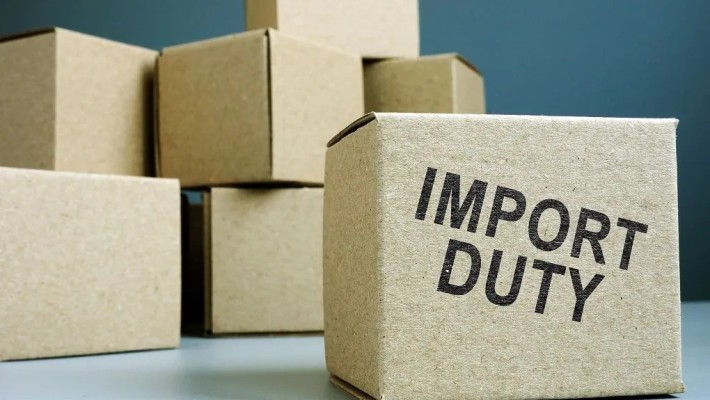Freight Forwarder Insights
Huin International Logistics Latest Articles
How to Calculate UK Import Duty for Freight
Importing goods involves multiple intricate steps, especially when it comes to determining import duty. This comprehensive guide will help you accurately calculate import duties for your shipments, ensuring a seamless and cost-efficient shipping journey. Whether you are new to the importing world or seeking to optimize your procedures, we're here to equip you with essential insights.
At HUIN Freight Forwarding, we simplify the complexities of importing. Our experienced team offers step-by-step guidance to ensure your shipments are handled efficiently and economically. With over 14th years of combined expertise, we provide personalized support to help you grasp and manage import duties, allowing you to focus on expanding your business.
Reach out to us today to discover how we can streamline your importing operations.
Understanding Import Duty Import duty is a levy imposed by a nation on goods arriving from abroad. This tax plays a pivotal role in supporting local industries by increasing the cost of foreign products, thus enabling local goods—often more environmentally friendly—to compete effectively, consequently boosting the local economy. Additionally, import duties generate revenue for the government, funding public services and infrastructure enhancements.
Steps to Calculate Import Duty for Shipments Determining import duty is closely tied to the overall cost calculation of your shipments. Below is a detailed step-by-step approach to accurately compute import duty and integrate it into your total shipping expenses.
Ascertain the Tariff Classification of Your Goods When importing goods into the UK, each item is assigned a Harmonized System (HS) code, based on its category. This code is crucial in determining the applicable duty and tax. Utilize the UK Trade Tariff tool, an online resource from the UK government, to enter a description of your goods and find potential codes.
Establish the Customs Value of Your Goods Next, determine the customs value, which forms the basis for calculating import tax. This figure includes the invoice value (the amount paid for goods), freight charges, costs to transport the goods to the UK, and shipping insurance expenses. Adding these elements yields the total customs value.
Determine the Appropriate Duty Rate With the HS code and customs value in hand, the next step is to ascertain the import duty. The UK Trade Tariff tool can also help you find the specific duty rate. Consider any trade agreements with the EU, North America, or Asia-Pacific regions, as these may offer reduced or waived import taxes, helping minimize overall expenses.
Compute the Import Duty Having gathered all necessary data, apply the following formula to compute import duty:
Import Duty = Customs Value × Duty Rate
For instance, if the customs value is £10,000 and the duty rate is 5%, the duty amounts to:
£10,000 × 0.05 = £500
Factor in Additional Costs Be mindful of supplementary expenses such as the Value Added Tax (VAT). VAT is added to the aggregate of the customs value, import duty, and any other import-related costs.
Also bear in mind excise duty, particularly for goods like alcohol and tobacco, which are subject to both excise and import duties.
Furthermore, consider customs handling fees, which cover the processing and management of your goods upon arrival. These fees ensure efficient customs processing, facilitating a smoother import procedure.
Illustrative Calculation Here's a practical example: you are a tech company in the UK importing assorted electronic goods from an EU supplier.
Tariff Classification: HS code for electronic goods is 8542 3190 00.
Customs Value:
Invoice value: £8,000 Freight charges: £500 Insurance fees: £100 Total customs value: £8,600 3. Duty Rate:
Assume a duty rate of 5%. 4. Compute Import Duty:
Import duty = £8,600 × 0.05 = £430 5. Additional Costs:
VAT = (Customs value + Import duty) × 20% VAT = (£8,600 + £430) × 0.20 = £1,806 6. Total import cost (excluding handling fees): £8,600 + £430 + £1,806 = £10,836
In this scenario, the cumulative duty cost is £516 when VAT is included.
Strategies for Managing Import Duty Costs Leverage trade agreements between the UK and partner countries to capitalize on reduced duty rates and cut costs substantially. Opt for cost-effective shipping strategies, such as consolidating shipments to minimize import occurrences or selecting more economical carriers.
Accurate classification of goods is crucial; using correct HS codes prevents overpayment of duties and avoids potential fines.
Expert advice from customs brokers or freight forwarders can be invaluable. They possess extensive knowledge of import regulations and can provide valuable guidance. Employing these strategies aids in effectively managing import duty expenses and streamlining the import process.
Collaborate with HUIN Freight Forwarding for Simplified Import Duties Precisely calculating import duties is an essential component of the import process. By adhering to these guidelines and utilizing available resources, you can perform accurate calculations and avoid unforeseen costs.
At HUIN Freight Forwarding, we recognize the intricacies of importing, particularly concerning duties. With more than forty years of combined experience, our committed team is poised to facilitate a simple and cost-effective importing process. Whether you're importing electronics, textiles, or other goods, partnering with us ensures you remain informed and compliant with import regulations. Allow us to handle the complexities, freeing you to concentrate on your business. Contact us today to learn how we can enhance your importing process.
